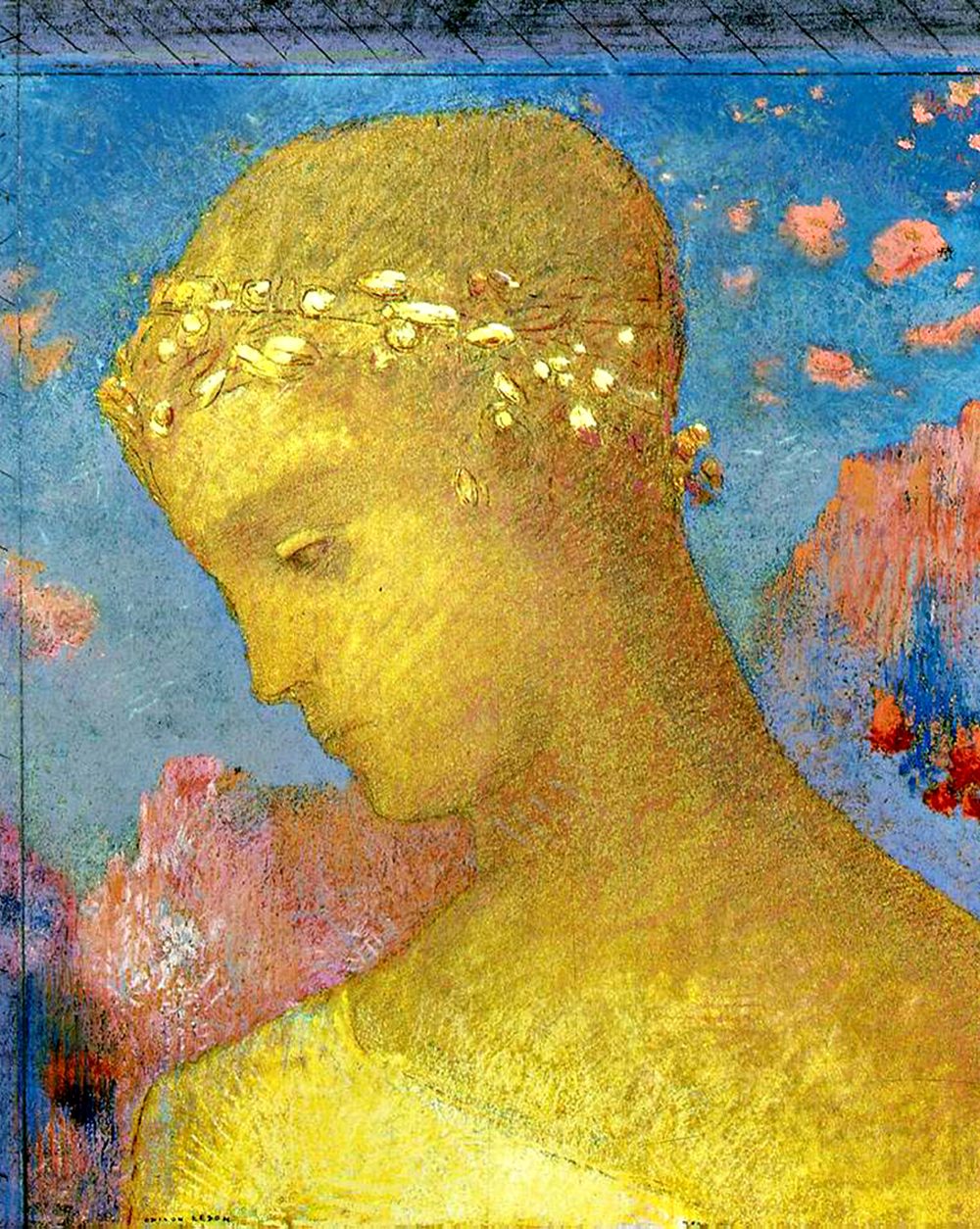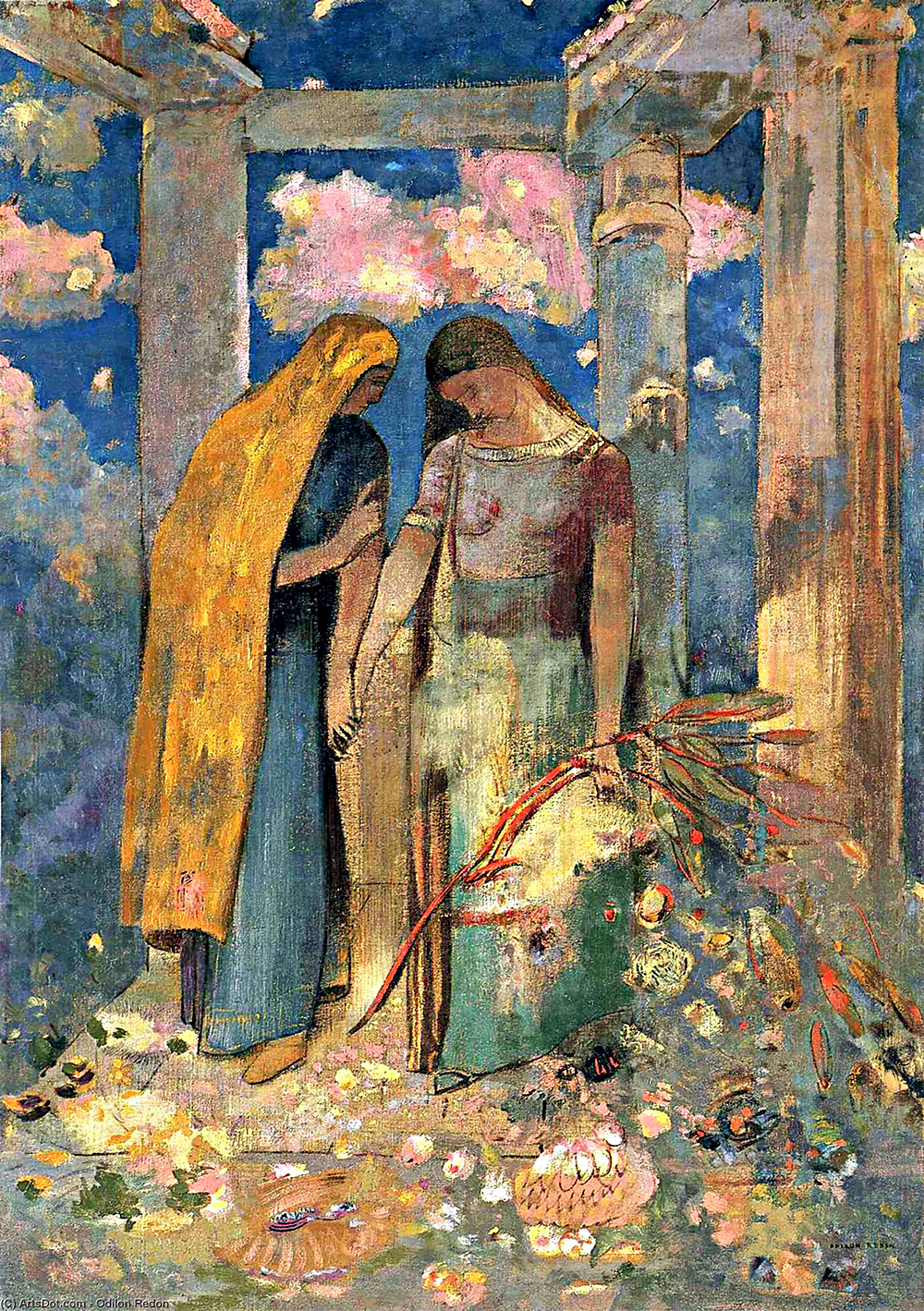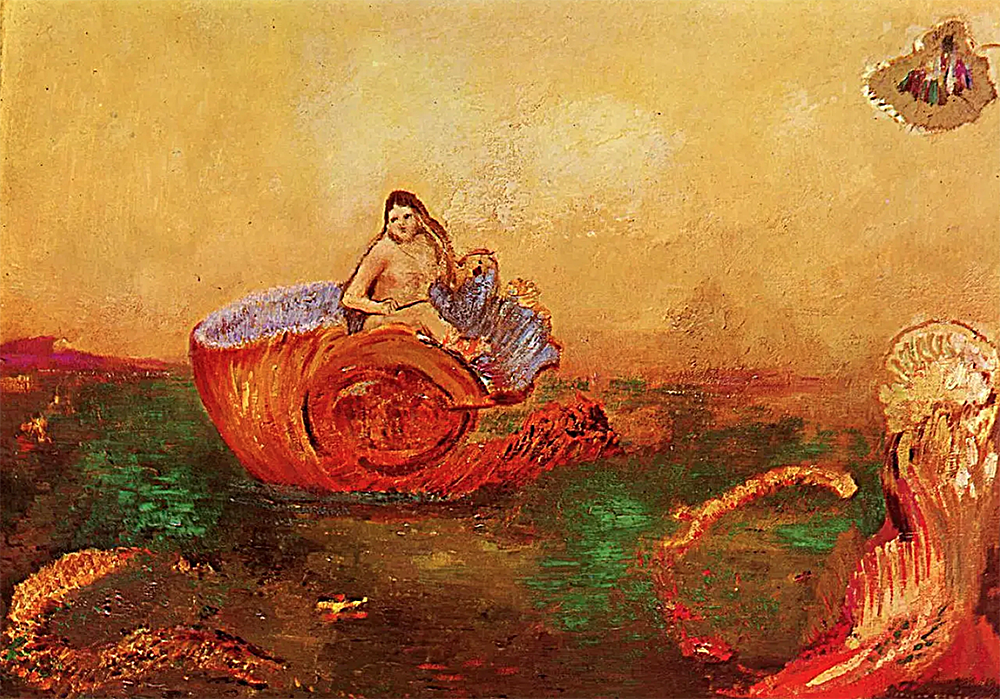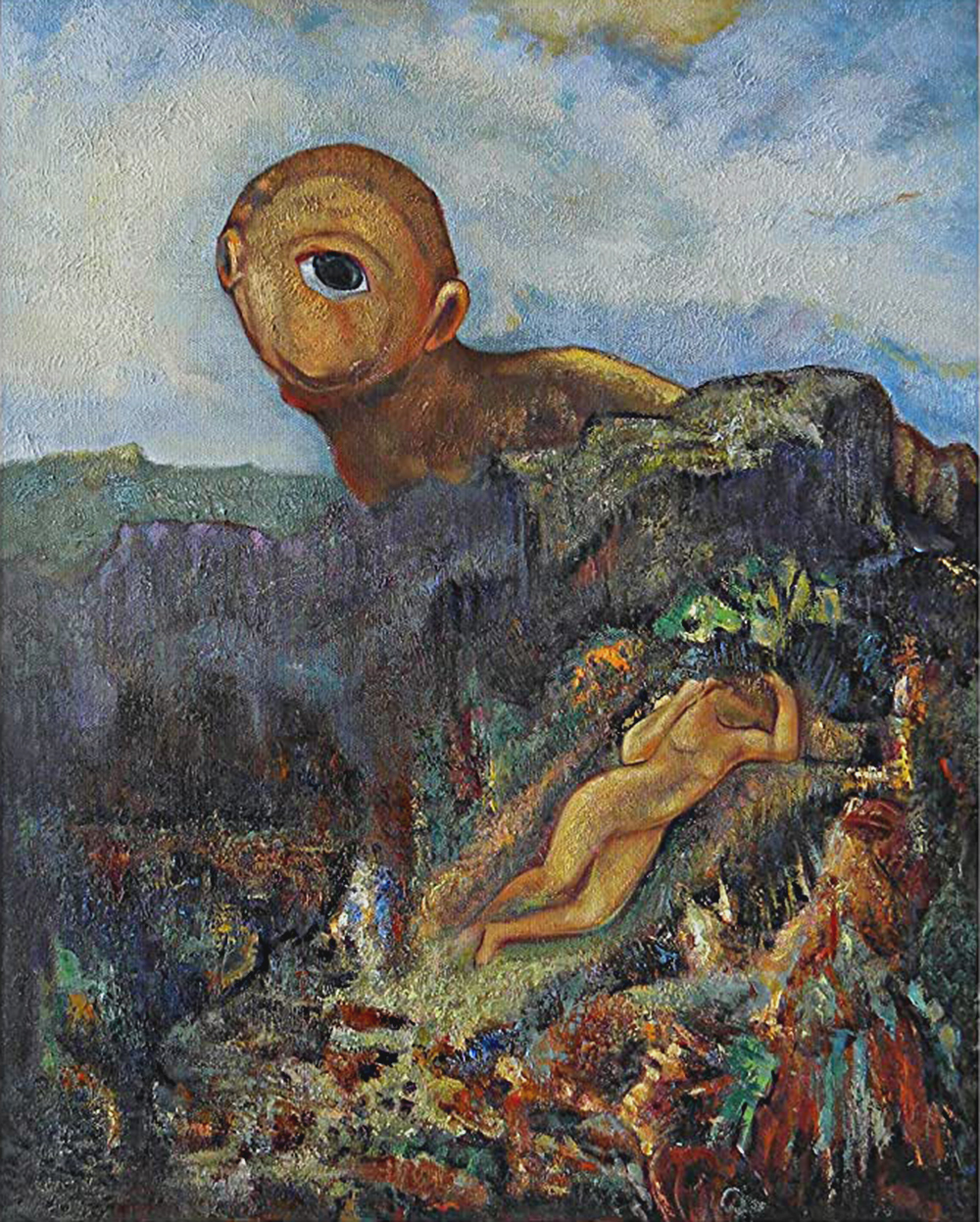odilon redon
︎Artist, Painting, Symbolism, Article
︎ Ventral Is Golden
odilon redon
︎Artist, Painting, Symbolism, Article
︎ Ventral Is Golden
︎ Ventral Is Golden
"When the last shaft of light penetrates the soul and unites the truths there lying dispersed."
- J.K Huysmam.

︎ Evocation of Roussel, 1912.
Considered as one of the precursors to both Dadaism and Surrealism, French Symbolist painter Odilon Redon’s work explored the invisible dimensions in which all physical phenomena seem to be rooted.
Associated with the Symbolist movement of the 19th Century that arose most notably in France, Russia and Belgium, Redon was propelled to represent the deeper, universal truths in the emotional realm of consciousness and to bathe the dreamscape in gossamer light through the use of mythic imagery.
Mainly as a reaction against Naturalism and Realism, the Symbolists were to combine the use of poetry and literature as the fertile ground in which the painted image bloomed to then systematically derange the senses. Some of the most notable writers to influence the movement were the likes of Charles Baudelaire, Arthur Rimbaud, Stéphane Mallarmé and Paul Valéry, who occupied their thoughts with the associative powers of the dream and the ‘l’idéal’ - a return to the original harmony of the individual with the image.
Associated with the Symbolist movement of the 19th Century that arose most notably in France, Russia and Belgium, Redon was propelled to represent the deeper, universal truths in the emotional realm of consciousness and to bathe the dreamscape in gossamer light through the use of mythic imagery.
“My originality consists in putting the logic of the visible to the service of the invisible.” - Odilon Redon.
Mainly as a reaction against Naturalism and Realism, the Symbolists were to combine the use of poetry and literature as the fertile ground in which the painted image bloomed to then systematically derange the senses. Some of the most notable writers to influence the movement were the likes of Charles Baudelaire, Arthur Rimbaud, Stéphane Mallarmé and Paul Valéry, who occupied their thoughts with the associative powers of the dream and the ‘l’idéal’ - a return to the original harmony of the individual with the image.

︎ Butterflies, 1910.




The Symbolists often used tone and texture in an effort to approach an indescribable condition, to rediscover eternity as sea fused with sun and flower. As much an aesthetic art of the emotional sphere as a total environment of folkloric turbulence, the works of the Symbolists rendered an égrégore within a noosphere, engaging the psyche in a telepathic dialogue reached through a kind of synesthesia with the archaic.
“Let the contentious spirit know
At this hour when we are silent
The stalks of multiple lilies grow
Far too tall for our reason
And not as the riverbank weeps
When its tedious game tells lies
Claiming abundance should reach
Into my first surprise
On hearing the whole sky and the map
Behind my steps, without end, bear witness
By the ebbing wave itself that
This country never existed.”
- Stephane Mallarmé.
![]()
“Let the contentious spirit know
At this hour when we are silent
The stalks of multiple lilies grow
Far too tall for our reason
And not as the riverbank weeps
When its tedious game tells lies
Claiming abundance should reach
Into my first surprise
On hearing the whole sky and the map
Behind my steps, without end, bear witness
By the ebbing wave itself that
This country never existed.”
- Stephane Mallarmé.

︎ Mystical Conversation, 1896.

︎ Head with Flowers, 1907.

︎ The Birth of Venus, 1912.
Redon’s darker psychological ‘Noir’ style, using charcoal medium, was his primary exploration into the psyche, until he later abandoned this in favour of more ethereal pastel and oil works in the early 1900’s. It was during this period that Redon often borrowed themes from Hindu and Buddhist culture, whilst exploring the full spectrum of connections to the rich esoteric traditions preserved within western and middle eastern mythology, cross-culturally referencing recurring motifs such as the figures of Oannes (a teacher of civilisation found in the Middle east, Sumeria, Dogon, Tamil and Maya mythology) and Polyphemus (the story of the giant Cyclops and his love for the water spirit Galatea - a story that spans the entire Eurasian continent).
“Now, Polyphemus, wretched Cyclops, you are careful of appearance, and you try the art of pleasing. You have even combed your stiffened hair with rakes: it pleases you to trim your shaggy beard with sickles, while you gaze at your fierce features in a pool so earnest to compose them. Love of flesh, ferocity and your keen thirst for blood have ceased. The ships may safely come and go!“ - Ovid, Metamorphoses.

︎ Le Cyclope, 1914.

︎ Oannès, 1908.

︎ Oannès et le Sphinx, 1910.

︎ Oannès, 1904.

︎ Oannes (Christ et Serpent), 1908.
“My drawings inspire and are not to be defined. They place us, as does music, in the ambiguous realm of the undetermined.” - Odilon Redon.

︎ Buddha Walking Among Flowers, 1905.

︎ The Buddha, 1905.
On this stylistic transition between his early Noir charcoal drawings and later explorations into the floral spectrum of world religions and culture, renowned writer Joris-Karl Huysmans's wrote in his novel ‘À Rebours’ (1884) that Redon’s paintings “enclosed inconceivable apparitions in their rough, gold-striped pear-tree wood. A head of a Merovingian style, resting against a bowl, a bearded man, at once resembling a Buddhist priest and an orator at a public reunion, touching the ball of a gigantic cannon with his fingers; a frightful spider revealing a human face in its body. The charcoal drawings went even farther into dream terrors… dry and arid landscapes, dusty plains, shifting ground, volcanic upheavals catching rebellious clouds, stagnant and livid skies. Sometimes the subjects even seemed to have borrowed from the cacodemons of science, reverting to prehistoric times. A monstrous plant on the rocks, glacial mud, figures whose simian shapes, heavy jaws, beetling eyebrows, retreating foreheads and flat skulls, recalled the ancestral heads of the first quaternary periods… These designs were beyond anything imaginable; they leaped, for the most part, beyond the limits of painting and introduced a fantasy that was unique, the fantasy of a diseased and delirious mind…
Seized with an indefinable uneasiness in the presence of these sketches, the same sensation caused by certain Proverbs of Goya which they recalled, or by the reading of Edgar Allen Poe's tales, whose mirages of hallucination and effects of fear Odilon Redon seemed to have transposed to a different art, he rubbed his eyes and turned to contemplate a radiant figure which, amid these tormenting sketches, arose serene and calm — a figure of Melancholy seated near the disk of a sun, on the rocks, in a dejected and gloomy posture. The shadows were dispersed as though by an enchantment. A charming sadness, a languid and desolate feeling flowed through him. He meditated long before this work which, with its dashes of paint flecking the thick crayon, spread a brilliance of sea-green and of pale gold among the protracted darkness of the charcoal prints.”
Seized with an indefinable uneasiness in the presence of these sketches, the same sensation caused by certain Proverbs of Goya which they recalled, or by the reading of Edgar Allen Poe's tales, whose mirages of hallucination and effects of fear Odilon Redon seemed to have transposed to a different art, he rubbed his eyes and turned to contemplate a radiant figure which, amid these tormenting sketches, arose serene and calm — a figure of Melancholy seated near the disk of a sun, on the rocks, in a dejected and gloomy posture. The shadows were dispersed as though by an enchantment. A charming sadness, a languid and desolate feeling flowed through him. He meditated long before this work which, with its dashes of paint flecking the thick crayon, spread a brilliance of sea-green and of pale gold among the protracted darkness of the charcoal prints.”

︎ Hommage to Goya, 1895.
![]()
︎ Stained Glass Window, Allegory, 1908.

︎ Stained Glass Window, Allegory, 1908.